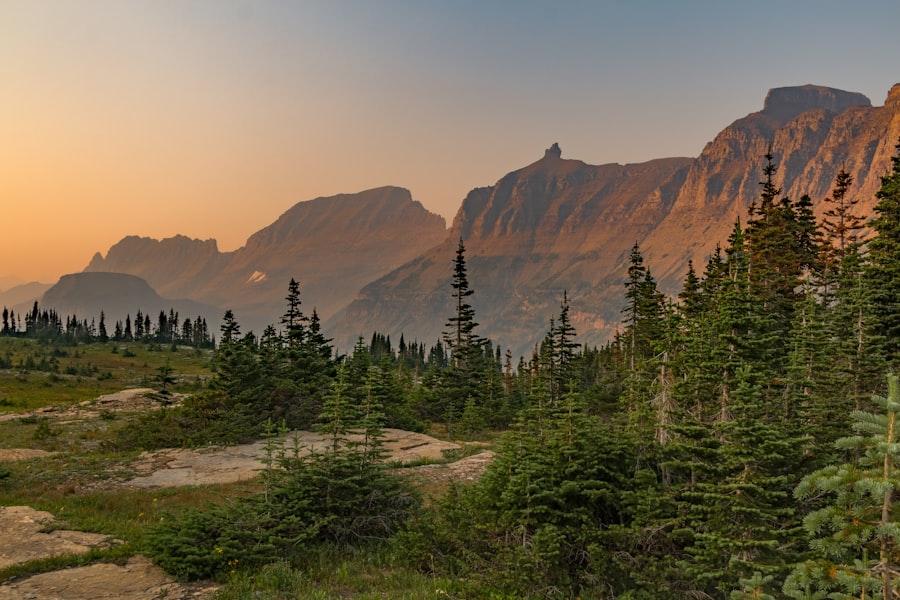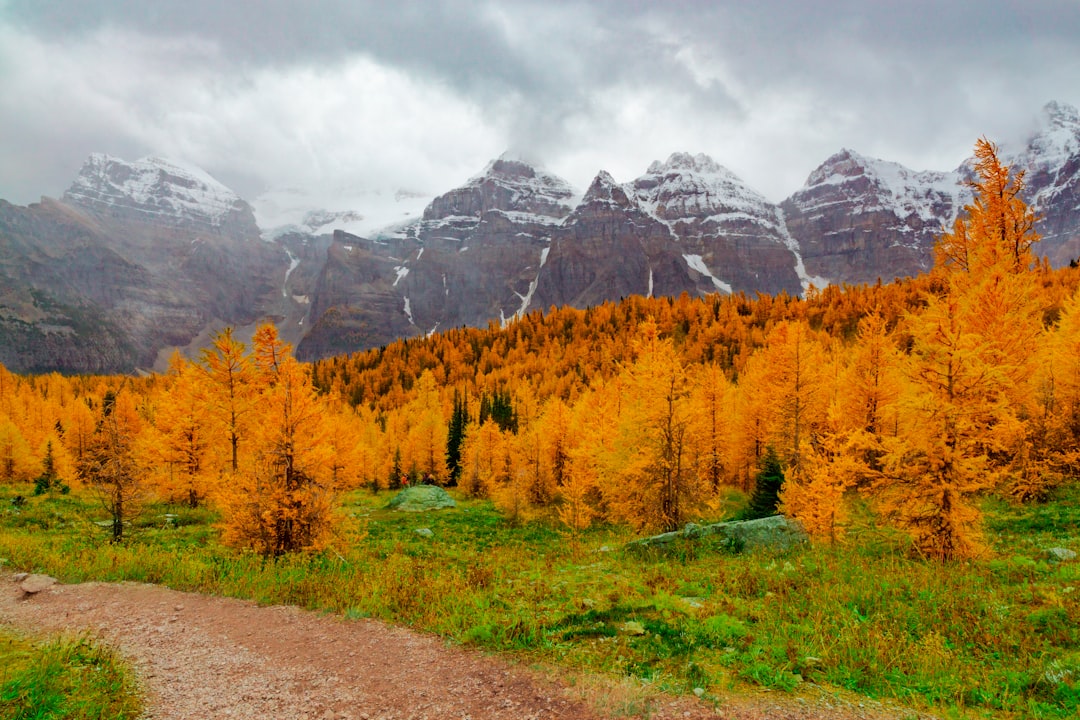The Rocky Mountains, often referred to simply as the Rockies, stand as one of North America’s most iconic and majestic mountain ranges. Stretching over 3,000 miles from Canada down to New Mexico, this formidable chain of peaks is not only a geographical marvel but also a cultural and ecological treasure. The Rockies are characterized by their rugged terrain, towering summits, and breathtaking vistas, drawing millions of visitors each year who seek to experience their natural beauty.
The mountains serve as a backdrop for a diverse array of ecosystems and wildlife, making them a vital component of the continent’s environmental landscape. Beyond their stunning aesthetics, the Rocky Mountains hold significant historical and cultural importance. They have been a source of inspiration for countless artists, writers, and adventurers throughout history.
The mountains have also played a crucial role in the development of the regions they traverse, influencing settlement patterns, economic activities, and even the spiritual beliefs of the Indigenous peoples who have called this area home for millennia. As such, the Rockies are not merely a physical feature of the landscape; they are a symbol of the natural heritage and resilience of the American West.
Key Takeaways
- The Rocky Mountains are a major mountain range in western North America, stretching over 3,000 miles from Canada to New Mexico.
- The formation of the Rocky Mountains is a result of tectonic plate movements and volcanic activity over millions of years.
- The Rocky Mountains are home to a diverse range of plant and animal species, including iconic wildlife such as grizzly bears, bighorn sheep, and bald eagles.
- The Rocky Mountains play a crucial role in regulating the climate by influencing weather patterns and acting as a barrier to air masses.
- Threats to the Rocky Mountains include climate change, habitat destruction, and resource extraction, which can have detrimental effects on the region’s biodiversity and ecosystem.
Geology and Formation of the Rocky Mountains
The geological history of the Rocky Mountains is a complex tale that spans millions of years. Formed primarily during the Laramide Orogeny, which occurred approximately 70 to 40 million years ago, the Rockies were shaped by tectonic forces that pushed ancient oceanic and continental plates together. This collision resulted in the uplift of sedimentary rock layers, creating the towering peaks that define the range today.
The process was not instantaneous; rather, it involved a series of geological events that included volcanic activity, erosion, and glaciation. As time progressed, glaciers carved out valleys and shaped the landscape further, leaving behind distinct features such as U-shaped valleys and sharp ridges. The interplay between erosion and sediment deposition has created a diverse topography that includes everything from high alpine meadows to deep canyons.
The geology of the Rockies is not only fascinating from a scientific perspective but also provides valuable resources such as minerals and fossil fuels, which have been exploited for economic gain over the years. Understanding this geological foundation is essential for appreciating the natural beauty and ecological significance of the Rocky Mountains.
Biodiversity in the Rocky Mountains

The Rocky Mountains are home to an astonishing variety of flora and fauna, making them one of North America’s most biodiverse regions. The range encompasses numerous ecosystems, from arid desert landscapes at lower elevations to lush alpine tundra at higher altitudes. This diversity in habitats supports an array of species, including large mammals such as elk, bighorn sheep, and grizzly bears, as well as countless bird species, reptiles, and amphibians.
The unique climatic conditions and varying elevations create microhabitats that allow different species to thrive. In addition to its charismatic megafauna, the Rockies boast an impressive array of plant life. From vibrant wildflowers that bloom in the summer months to hardy coniferous trees that withstand harsh winters, the vegetation in this region is both diverse and resilient.
Many plant species found in the Rockies are endemic, meaning they are not found anywhere else in the world. This rich biodiversity is crucial for maintaining ecological balance and provides essential services such as pollination, soil stabilization, and carbon sequestration.
The Role of the Rocky Mountains in Climate Regulation
| Metrics | Data |
|---|---|
| Altitude of the Rocky Mountains | 4,401 meters (14,440 feet) at its highest point |
| Effect on precipitation | Causes orographic lift, leading to increased precipitation on the western side and rain shadow effect on the eastern side |
| Role in temperature regulation | Acts as a barrier to cold air masses from the north and helps moderate temperatures in the region |
| Impact on climate patterns | Influences regional climate patterns and contributes to the diversity of ecosystems in the area |
The Rocky Mountains play a pivotal role in regulating climate patterns across North America. Acting as a natural barrier, they influence weather systems by intercepting moisture-laden air masses that move eastward from the Pacific Ocean. As these air masses rise over the mountains, they cool and condense, resulting in precipitation that nourishes both the mountain ecosystems and the plains beyond.
This phenomenon is particularly important for agriculture in surrounding areas, as it ensures a steady supply of water for crops. Moreover, the Rockies contribute to climate regulation through their vast forests and alpine meadows, which act as carbon sinks. These ecosystems absorb carbon dioxide from the atmosphere, helping to mitigate climate change effects.
However, climate change poses significant challenges to these natural processes. Altered precipitation patterns and rising temperatures threaten to disrupt the delicate balance of ecosystems within the Rockies, potentially leading to shifts in species distribution and increased vulnerability to wildfires.
Threats to the Rocky Mountains
Despite their grandeur and ecological significance, the Rocky Mountains face numerous threats that jeopardize their health and sustainability. One of the most pressing issues is climate change, which has already begun to alter weather patterns and disrupt ecosystems within the range. Rising temperatures can lead to earlier snowmelt, affecting water availability for both wildlife and human populations downstream.
Additionally, changing climatic conditions may result in habitat loss for many species that are unable to adapt quickly enough. Human activities also pose significant threats to the Rockies. Urban development, mining operations, and recreational activities can lead to habitat fragmentation and pollution.
The increasing popularity of outdoor recreation has raised concerns about overuse in certain areas, which can degrade trails and disturb wildlife. Furthermore, invasive species introduced by human activity can outcompete native flora and fauna, further threatening biodiversity. Addressing these challenges requires concerted efforts from policymakers, conservationists, and local communities.
Conservation Efforts in the Rocky Mountains

In response to the myriad threats facing the Rocky Mountains, various conservation efforts have been initiated to protect this vital ecosystem. Numerous national parks and protected areas have been established throughout the range, including iconic sites like Yellowstone and Rocky Mountain National Park. These protected areas serve as sanctuaries for wildlife and preserve critical habitats while providing opportunities for research and education about conservation practices.
Additionally, grassroots organizations and local communities have mobilized to promote sustainable practices that minimize human impact on the environment. Initiatives such as habitat restoration projects, wildlife corridors, and public awareness campaigns aim to foster a sense of stewardship among residents and visitors alike. Collaborative efforts between government agencies, non-profit organizations, and Indigenous groups are essential for developing comprehensive strategies that address both conservation goals and community needs.
The Importance of the Rocky Mountains as a Watershed
The Rocky Mountains serve as a crucial watershed for much of North America, providing vital water resources for millions of people across several states and provinces. The snowpack that accumulates during winter months acts as a natural reservoir, slowly releasing water during warmer months when it is most needed for agriculture and urban consumption. Major rivers such as the Colorado River and Missouri River originate in these mountains, making them essential for irrigation, drinking water supply, and hydroelectric power generation.
The health of this watershed is intricately linked to the overall well-being of ecosystems within the Rockies. Healthy forests and wetlands play a significant role in maintaining water quality by filtering pollutants and regulating runoff. However, threats such as deforestation, pollution from agricultural runoff, and climate change can compromise this vital resource.
Protecting watersheds within the Rockies is not only crucial for sustaining local communities but also for preserving biodiversity and ensuring ecological resilience.
Recreation and Tourism in the Rocky Mountains
Recreation and tourism are integral components of life in the Rocky Mountains, contributing significantly to local economies while providing opportunities for outdoor enthusiasts to connect with nature. The range offers a plethora of activities year-round, including hiking, skiing, rock climbing, mountain biking, and wildlife watching. National parks within the Rockies attract millions of visitors annually who come to experience their stunning landscapes and diverse recreational opportunities.
Popular destinations often face issues such as overcrowding, trail erosion, and wildlife disturbances due to human activity. Balancing economic benefits with conservation efforts is essential for ensuring that future generations can enjoy these natural wonders without compromising their integrity.
Sustainable tourism practices that promote responsible visitation can help mitigate negative impacts while fostering appreciation for the unique beauty of the Rockies.
Indigenous Peoples and the Rocky Mountains
The Indigenous peoples of North America have deep-rooted connections to the Rocky Mountains that span thousands of years. Tribes such as the Ute, Shoshone, Crow, and Blackfeet have historically relied on these lands for sustenance, spiritual practices, and cultural identity. Their knowledge of local ecosystems has been passed down through generations, emphasizing sustainable practices that honor the land’s resources.
Today, Indigenous communities continue to advocate for their rights to land management and cultural preservation within the Rockies. Collaborative efforts between Indigenous groups and conservation organizations aim to integrate traditional ecological knowledge into modern conservation strategies. Recognizing Indigenous perspectives is crucial for fostering a holistic approach to land stewardship that respects both cultural heritage and environmental sustainability.
The Rocky Mountains as a Habitat for Endangered Species
The Rocky Mountains provide critical habitat for several endangered species that rely on these unique ecosystems for survival. Species such as the Canada lynx, gray wolf, and mountain goat face numerous threats due to habitat loss, climate change, and human encroachment. Conservation efforts aimed at protecting these species often involve habitat restoration initiatives and legal protections that help safeguard their populations.
Efforts to monitor endangered species populations within the Rockies are essential for understanding their needs and implementing effective conservation strategies. Collaborative research between scientists, conservationists, and local communities can provide valuable insights into species behavior and habitat requirements. By prioritizing these efforts, stakeholders can work towards ensuring that future generations will continue to witness the rich biodiversity that characterizes this remarkable mountain range.
Future Challenges and Opportunities for the Rocky Mountains
As stewards of one of North America’s most treasured landscapes, stakeholders face numerous challenges in preserving the integrity of the Rocky Mountains while also embracing opportunities for sustainable development. Climate change remains a significant concern; however, it also presents an opportunity for innovation in conservation practices. By investing in renewable energy sources such as wind or solar power within surrounding communities, stakeholders can reduce reliance on fossil fuels while promoting economic growth.
Furthermore, fostering partnerships between government agencies, non-profit organizations, Indigenous communities, and local residents can lead to more effective management strategies that prioritize both conservation goals and community needs. Engaging younger generations through education programs focused on environmental stewardship can inspire future leaders who will advocate for sustainable practices within these vital ecosystems. In conclusion, while challenges abound in protecting the Rocky Mountains’ ecological integrity amidst changing conditions brought about by human activity and climate change impacts; there exists immense potential through collaborative efforts aimed at fostering resilience within this iconic landscape—ensuring its beauty endures for generations yet unborn.
The Rocky Mountains have long been considered a formidable natural defense barrier, playing a crucial role in the geographical and historical landscape of North America.
This article delves into the geological formation and historical importance of the Rockies, providing a comprehensive overview of their role as a natural defense. You can read more about it by visiting this link.
WATCH THIS! The Hidden Reason No One Can Invade America | A Geographical Analysis
FAQs
What are the Rocky Mountains?
The Rocky Mountains are a major mountain range in western North America, stretching over 3,000 miles from Canada to New Mexico. They are known for their rugged terrain, diverse ecosystems, and stunning natural beauty.
Why are the Rocky Mountains considered a final defense barrier?
The Rocky Mountains are considered a final defense barrier due to their rugged and difficult terrain, which makes it challenging for invaders to cross. The mountains have historically served as a natural barrier, protecting the western regions of North America from potential threats.
What role did the Rocky Mountains play in history?
The Rocky Mountains played a significant role in shaping the history of North America. They served as a natural barrier for early settlers and explorers, as well as for indigenous peoples. The mountains also played a crucial role in the westward expansion of the United States.
How do the Rocky Mountains impact the environment?
The Rocky Mountains have a significant impact on the environment, influencing weather patterns, providing habitat for diverse plant and animal species, and serving as a source of freshwater for rivers and streams. The mountains also contribute to the overall biodiversity of the region.
Are there any challenges associated with the Rocky Mountains as a defense barrier?
While the Rocky Mountains provide a natural defense barrier, they also present challenges for transportation, infrastructure development, and communication. The rugged terrain and harsh weather conditions can make it difficult to traverse the mountains, posing logistical challenges for military and civilian operations.
